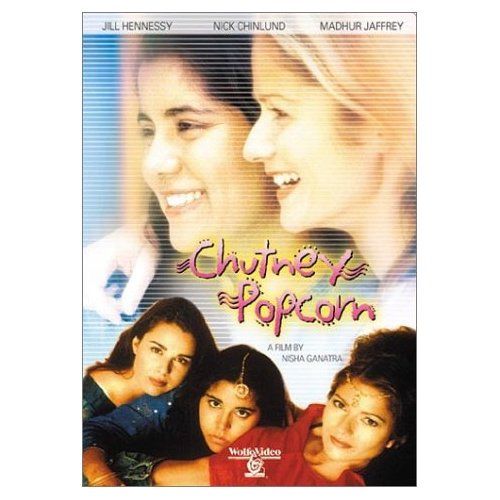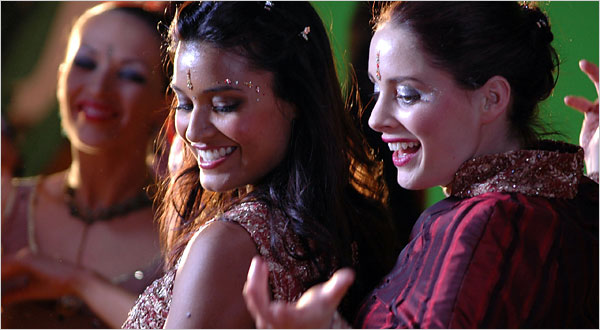I have a confession: I love bad lesbian romantic comedies. I once had a summer where I watched little else, delighting in the bad hair, worse puns, and silly sex scenes.
Before I begin, I want to offer a point of clarification. When I say that I enjoy “bad” lesbian romantic comedies, I do so because the unfortunate truth is that there is little else (see here). But it is also true that, until we have a bigger pot to choose from, we can’t be too picky.
The bone I’d like to pick here is not regarding bad dialogue or unrealistic sex scenes, but with the depiction of race, religion, and culture in lesbian romcoms to date. And with that, another disclosure: I am not a film critic or scholar. What I am is a queer feminist academic (and self-disclosed lover of bad lesbian film). And what I’ve observed in lesbian romcoms is a noticeable pattern of “othering” when it comes to the acceptance of homosexuality.
There has been a lot of work in feminist and queer theory lately on the concept of “othering,” most prominently with the work on homonationalism, a concept first coined by Jaspir Puar. Without getting too academicy, the concept describes the way in which Western-based understandings of homosexual rights and acceptance are pitted against “other” cultures’ lack of rights/acceptance. It goes without saying that many of these countries themselves (the US is at the top of this list) do not extend full rights to the queer community. However, in positioning themselves against “others,” (white) Western cultures try to promote a more “liberal” and “democractic” showing of acceptance that proves that they are more “advanced” than “other” cultures. I think that this concept has great relevance for the way that lesbian films deal with race, class, religion, and culture.
 |
| Movie poster for Chutney Popcorn |
The first example I’ll use to illustrate this phenomenon is the 1999 film Chutney Popcorn, set in New York, and centered around the Indian-American Reena and her white girlfriend Lisa. Although Reena’s sister is married to a white man, which their mother accepts, she “draws the line” at Reena’s lesbianism. Lisa’s mother is completely supportive – in a role almost as annoying in its supportiveness as Reena’s mother’s is in its disproval. The dualistic division of acceptance – white = accepting/brown = disproving – is clear.
In the hopes of gaining her mother’s acceptance, Reena offers to be the surrogate mother for her sister’s child. High jinx ensue. I won’t ruin the ending here (honestly it might be worth watching if you haven’t), but let’s just say that the more traditional characters in the film “evolve” towards the “right” way of thinking by the conclusion.
 |
| Shelley Conn as Nina and Laura Fraser as Lisa in Nina’s Heavenly Delights |
Another example of the “othering” phenomenon is found in the 2006 Nina’s Heavenly Delights. While set in Glasgow instead of New York, Nina’s Heavenly Delights also features an Indian/white lesbian couple. Nina, the Scottish-Indian half of the couple, has returned to Glasgow from London, where she ran away to avoid an arranged marriage. She promptly falls for the white Scottish Lisa (apparently the name “Lisa” is code for white lesbian…), under the disapproving eyes of her family. Again, not to give away the ending, but you might guess that there is an “evolving” understanding of sexuality by the film’s end here as well.
The us/them othering and ethnic stereotyping in this film is all the more disappointing as it is directed and co-written by Pratibha Parmar. Parmar is a documentarian primarily known – in feminist circles at least! – for the 1993 film Warrior Marks, produced by and featuring Alice Walker. (If you haven’t seen that one, you should check it out as well – and watch for the cameo by Tracy Chapman, Walker’s partner at the time.)
The films Saving Face (2004) and I Can’t Think Straight (2008; and, yes, that really is the title) also feature disapproval from “traditional” families – Chinese-American in Saving Face, and Jordanian and British-Indian in I Can’t Think Straight. Although the films do not feature white partners with which to contrast the lack of acceptance from their families, cultural stereotypes and the process of othering nevertheless abound in both films.
In offering this critique, I do not want to suggest that cultural, regional, religious, class, and racial nuances in understandings of sexuality do not exist, nor do I think that directors/writers should start to gloss over these elements in their films. What I want to stress is that these nuances are not so black and white (no pun intended). The reality is that, sometimes, white lesbians are shunned from their families of birth, and black lesbians are embraced. And some brown lesbians are not rejected from their religious communities, but quite the opposite. These alternative narratives are not reflected in lesbian film.
It is refreshing then, that the pot of lesbian films to choose from is growing. For example, though technically not a romcom, the recent, and critically-acclaimed, film Pariah is a good example of how racial nuances can be dealt with on screen, showing that lesbians do not live in the “all or nothing” world that previous films suggest. We can only hope that the future of lesbian film will offer more realistic depictions of race, culture, and sexuality.
———-
Gwendolyn Beetham is an independent scholar, the editor of The Academic Feminist, and a semi-professional lesbian film watcher. She lives in Brooklyn. Follow her on twitter: @gwendolynb
